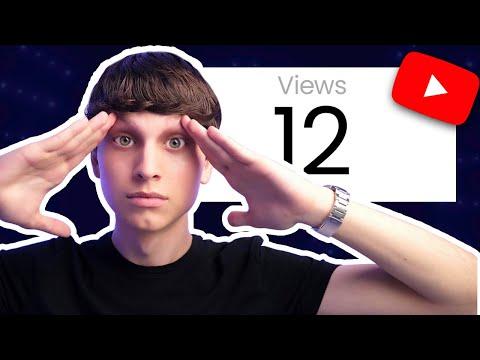I recently encountered a troubling issue while working on my YouTube channel that led me to reflect deeply on the common pitfalls that small creators often fall into. It all began when I noticed my channel’s growth stagnating despite putting in hours of work into producing content. This realization hit me hard; my once exciting and creative project now seemed to be stuck in a rut, with viewer engagement dropping and new subscribers becoming a rare occurrence.
Initially, I blamed it on the algorithm or external factors, but as I delved deeper, I discovered that the problems were largely within my control. One of the most glaring issues was my lack of a clear content strategy. I had been producing videos on a whim, covering various topics that piqued my interest, but this scattergun approach meant there was no cohesive theme to my channel. Without a defined niche, my content lacked focus, which made it harder for viewers to understand what my channel was about and why they should subscribe.
Another significant mistake I made was neglecting the importance of SEO. I had heard about keywords and tags but didn’t fully grasp their impact. My video titles were often vague, and my descriptions didn’t include relevant keywords that could help people find my content. This lack of optimization meant that my videos were not reaching their potential audience. Realizing this, I began to research SEO strategies more thoroughly and applied them to my content, from crafting engaging titles to including well-researched keywords in the descriptions.
Consistency was another area where I faltered. I would go through phases of posting regularly, followed by periods of inactivity due to burnout or lack of motivation. This inconsistency hurt my channel’s growth, as subscribers didn’t know when to expect new content, and the algorithm didn’t have enough data to push my videos more aggressively. To address this, I created a content calendar and committed to a consistent posting schedule, which helped build viewer trust and engagement over time.
Engagement with my audience was another critical aspect that I had underestimated. I rarely responded to comments or interacted with my viewers on social media. I now understand that building a community around my channel is crucial. By actively engaging with my audience, I was able to foster a sense of connection and loyalty, which encouraged more people to subscribe and interact with my content. I started setting aside time to respond to comments and participate in discussions, which ultimately helped improve my channel’s performance.
One of the ultimate mistakes I made was not investing in the quality of my content. Early on, I relied on basic equipment and did not pay much attention to the production value. Poor audio and video quality can be a major deterrent for viewers. I decided to invest in better equipment and improve my editing skills to enhance the overall quality of my videos. This upgrade made a significant difference in how my content was perceived and helped attract more viewers.
Another mistake was underestimating the importance of thumbnails and video branding. I used generic or unappealing thumbnails that didn’t stand out in the sea of YouTube content. Realizing the power of a compelling thumbnail, I started designing custom thumbnails that were visually appealing and relevant to the video content. This simple change had a noticeable impact on click-through rates and overall viewership.
Monetization and promotional strategies were areas I had also neglected. I didn’t explore potential revenue streams or ways to promote my channel beyond organic growth. Once I began looking into collaborations, sponsorships, and cross-promotion, I found new avenues to grow my audience and generate income. These strategies not only provided additional resources but also increased my channel’s visibility.
Finally, I learned the importance of analyzing performance data. Initially, I ignored analytics, assuming that if I made good content, success would follow. However, understanding metrics like watch time, audience retention, and traffic sources gave me valuable insights into what was working and what needed improvement. By regularly reviewing this data, I could make informed decisions and adjust my strategies accordingly.
Addressing these mistakes was not an overnight fix. It required ongoing effort and adaptation. As I implemented these changes, I began to see gradual improvements in my channel’s performance. Subscribers started to grow, engagement increased, and my content reached a wider audience. Reflecting on these experiences, I realized that avoiding these common pitfalls and continually learning from mistakes is crucial for anyone running a small YouTube channel. Each step I took to correct these errors has been a valuable lesson, bringing me closer to achieving my ultimate goal of growing a successful and engaging YouTube presence.
